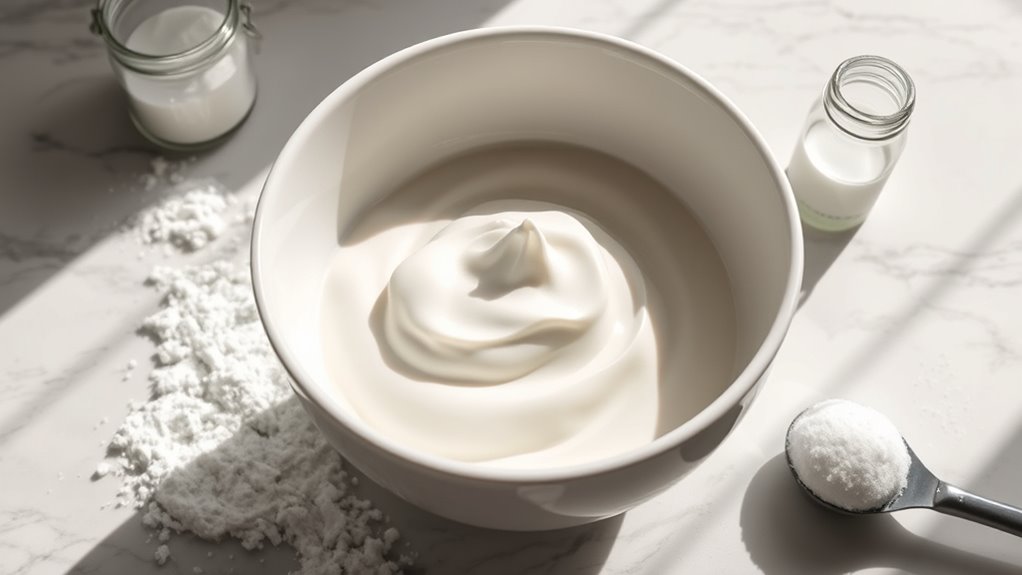To make royal icing with cream of tartar, gather 1 cup powdered sugar, 1–2 teaspoons liquid (water or lemon juice), and 1/4 teaspoon cream of tartar per batch, plus optional vanilla. Sift the sugar, whisk dry ingredients, then cream a portion of liquid with a portion of sugar until smooth. Gradually add the rest of the liquid, beat until shiny and forms a smooth ribbon, and test texture. You’ll master stability and gloss as you proceed, and more tips await.
Ingredients and Quantity
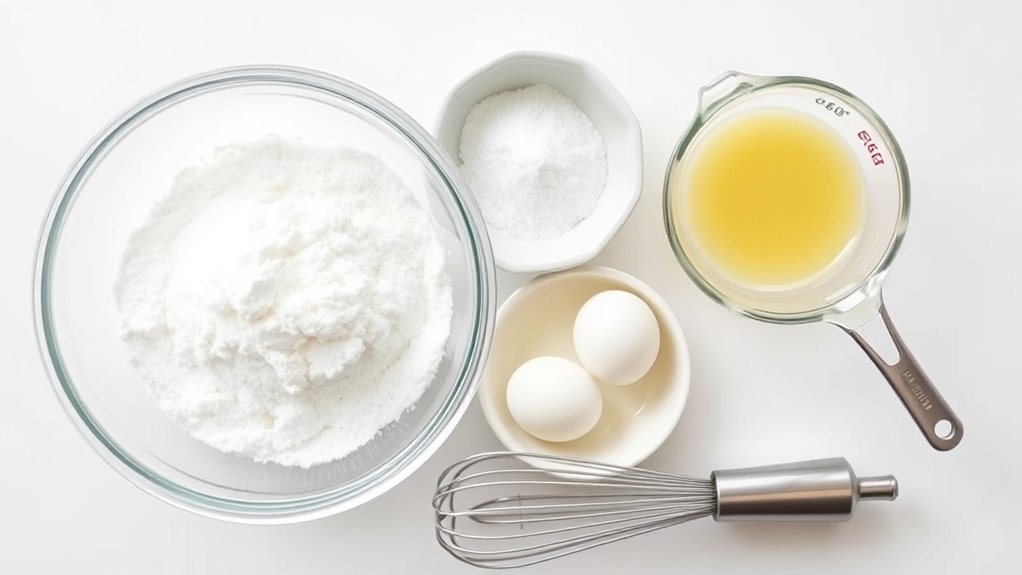
The ingredients for royal icing are simple and precise: powdered sugar, egg white or meringue powder, and a small amount of liquid (water, milk, or lemon juice), with optional cream of tartar or vanilla for flavor. You’ll measure with care, keeping texture consistent as you proceed. Measuring ingredients becomes a steady ritual, not a guess, and you’ll note batch differences to stay aligned with your standards. For flexibility, consider alternative sweeteners if needed, yet maintain structure. Table below guides quick checks while you work.
| Item | Quantity |
|---|---|
| Powdered sugar | 1 cup per batch |
| Liquid | 1–2 tsp per cup sugar |
Preparations
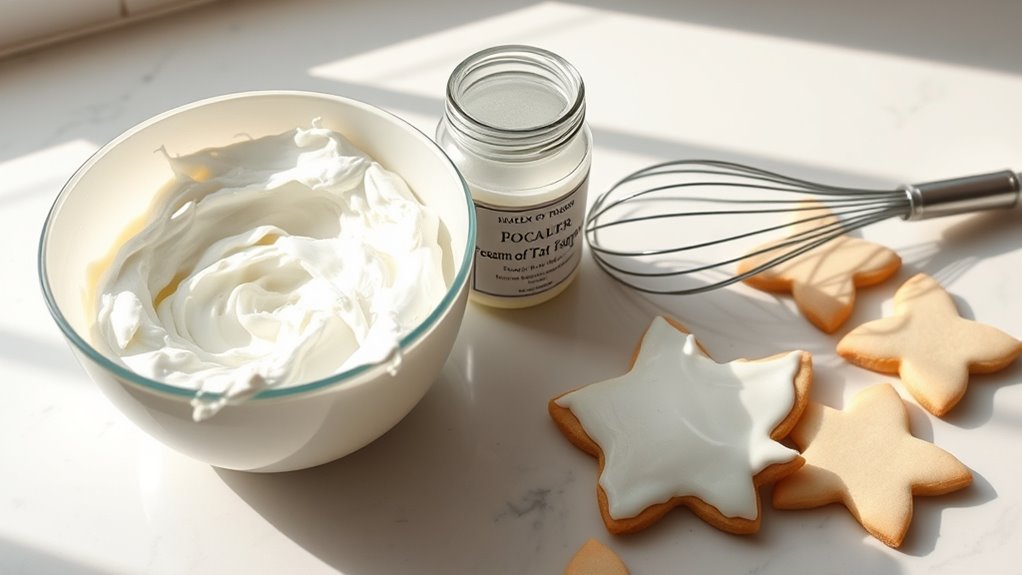
To begin preparations, gather your ingredients and tools exactly as outlined, then set up a clean workspace with a steady surface, a measuring cup, mixing bowl, whisk or electric mixer, and a timer. You approach this with intention, not haste, because discipline yields reliable results. Confirm room temperature ingredients and have cream of tartar measured precisely. Prepare your workspace by wiping surfaces, labeling bowls, and organizing utensils to prevent cross-contamination. Establish a routine: wash hands, dry thoroughly, and pre-read the recipe steps. Maintain steady posture and controlled motions to preserve precision. Focus on mixing techniques, avoiding overbeat or underbeat, and monitor texture as you progress. This groundwork supports consistency control and guarantees the icing responds predictably to subsequent steps.
How to Cook
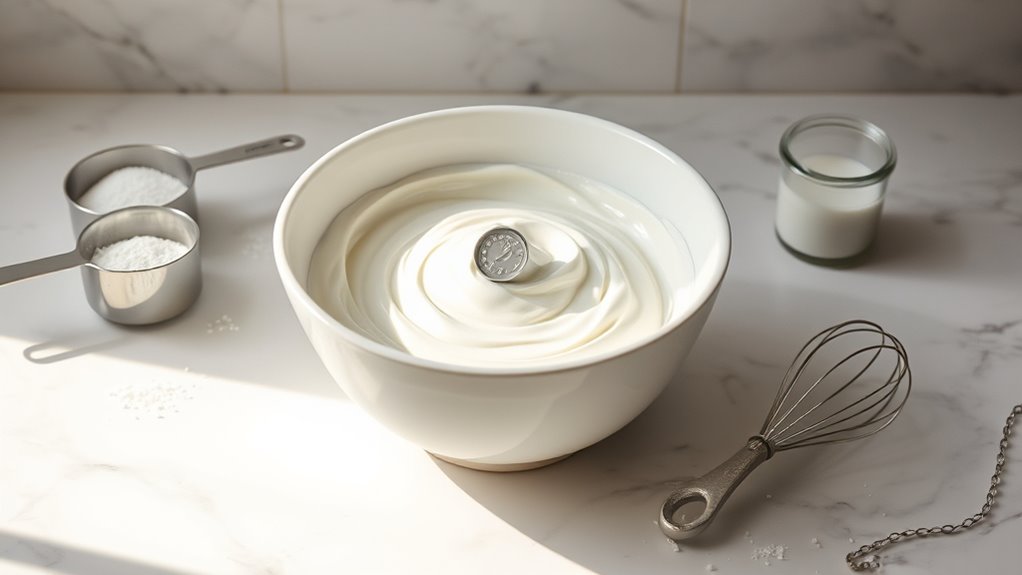
- Combine the dry ingredients in a clean bowl.
- Whisk the dry ingredients until evenly distributed.
- Cream the fat with a portion of the liquid, measuring precisely to control stiffness.
- Gradually add the rest of the liquid, pausing to test the texture as you go.
- Maintain a steady, calm pace; prioritize precision over speed.
- Stir the mixture until it shines and holds a smooth, scoopable ribbon.
- If the mixture is too stiff, thin it with a teaspoon of water.
- If the mixture is too loose, fold in powdered sugar sparingly.
- Monitor the temperature to avoid overheating.
- Record any deviations in your notes to refine future batches.
- Focus on baking techniques that promote consistency.
- Consider icing variations to suit different treats.
- Respect the process to build confidence for improvisation.
How to Serve
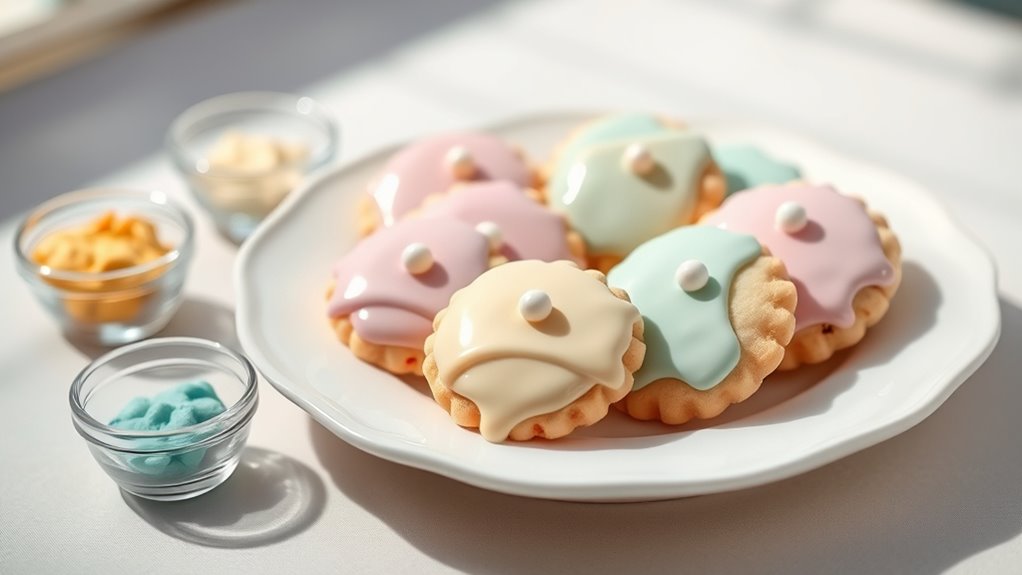
After mastering the icing’s texture and consistency, you’re ready to contemplate serving. You’ll present with a calm, deliberate cadence that respects precision and taste. Begin with clean surfaces and a level plate to emphasize the icing’s sheen and color. Consider serving suggestions that showcase versatility: separate bowls for color accents, piping tips for controlled detail, and a light dusting of sugar pearls for contrast. Keep portions modest to honor texture over quantity. For presentation ideas, arrange cookies or pastries in orderly rows, using negative space to elevate each item. Pair the icing with beverages or soft palettes that won’t overwhelm sweetness. Prioritize consistency in distance between items and uniform height to sustain a refined, confident display.
Tips
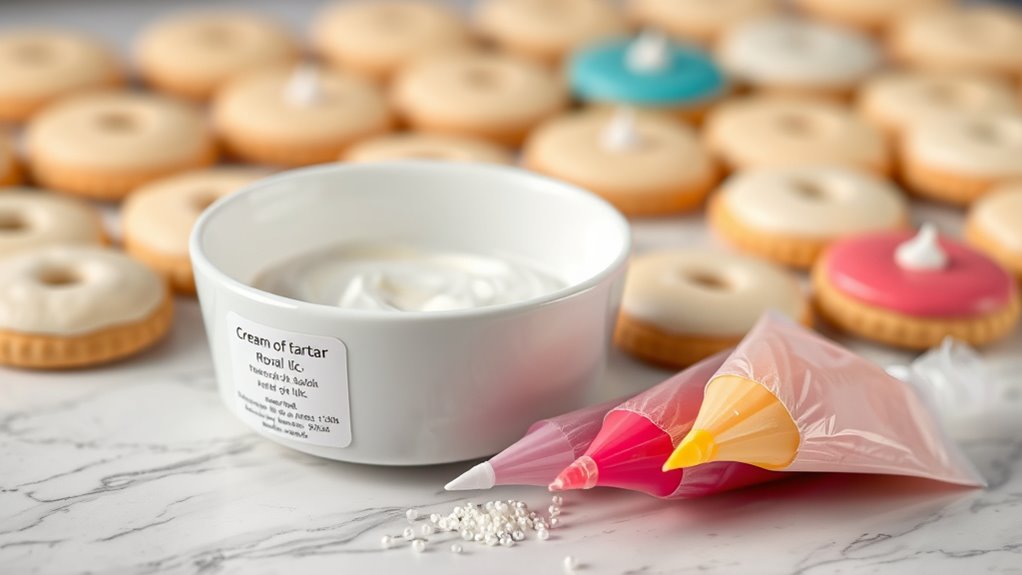
If you want consistent royal icing results, measure your ingredients precisely and keep your workspace clean and organized, because small deviations compound and affect texture. In this Tips section, you’ll refine control without sacrificing creativity. Pay attention to icing consistency as you adjust sugar and liquid; small tweaks yield predictable results. Use a thermometer to verify temperature when adding cream of tartar, avoiding abrupt changes that undermine stability. Work methodically: sift sugar, liquids last, and beat at steady speed to a glossy finish. For decorating techniques, practice on parchment before applying to treats, matching piping pressure to line and fill strokes. Keep containers labeled, tools dry, and air exposure minimal to prevent drying out. Precision remains your ally; freedom follows from reliable, repeatable results.
Food Value and Benefit
Prepared royal icing primarily provides energy through its sugar content, with modest nutritional contributions from egg white powder and cream of tartar. While not a significant source of vitamins or minerals, it supports dessert aesthetics and enjoyment.
Benefits of consuming royal icing include:
- Enhances visual appeal and texture of baked goods, increasing satisfaction.
- Provides quick energy from sugars.
- Contains small amounts of minerals such as potassium and calcium from cream of tartar.
- Offers protein from egg white powder, supporting minor nutritional value.
- Encourages mindful portion control due to its sweetness and richness.
Frequently Asked Questions
Can I Substitute Cream of Tartar With Lemon Juice?
Yes, you can substitute lemon juice, but expect differences in stiffness and sweetness. Use less or equal量 to avoid thinning. For precise results, adjust sugar and consistency gradually. Lemon juice is a baking substitute, sugar balance matters, test twice.
How Long Does Royal Icing With Cream of Tartar Last?
Royal icing with cream of tartar lasts about a week unrefrigerated; two to three weeks if sealed and refrigerated. Shelf life, storage tips matter—keep airtight, discard if it hardens or smells off, and reinforce quality through disciplined timing.
Can I Freeze Royal Icing for Later Use?
Yes, you can freeze royal icing for later use. Use freezing methods: store in airtight, freeze-safe containers, leaving headroom. Thaw overnight in fridge, then rebeat briefly. Maintain icing storage discipline; freeze in small portions for flexible, precise use.
Is Dairy-Free Cream of Tartar Available?
Yes, dairy-free cream of tartar exists, and you can find dairy free alternatives from lemon juice blends or substitutes. You’ll explore cream tartar sources thoughtfully, maintaining precision while you pursue freedom to bake with confidence.
What Texture Results From Different Sugar Types?
You’ll get chewy with granulated sugar, and smoother, silkier peaks with powdered sugar; the texture varies as sugar type dissolves and air incorporates, so you adjust agitation, moisture, and time to achieve your desired fondant-like or glaze consistency.
